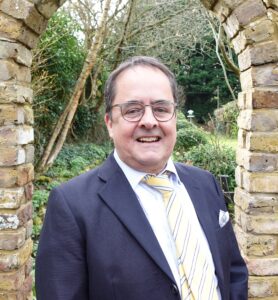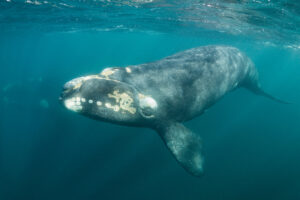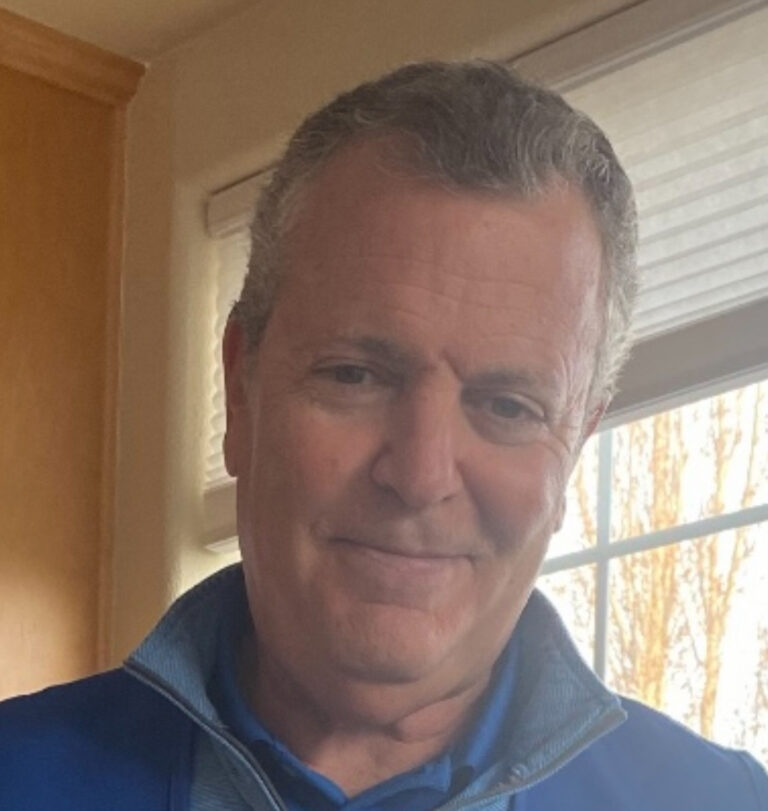
Groco president Don Gross comes from a long line of creative, get-the-job-done kind of guys. For the centennial celebration of his family’s company in 2018, he knew he needed to do more than order a catered lunch for his employees. Without telling anyone, including his family, he gathered vintage clothes and persuaded a friend to let him borrow a restored 1915 Ford Model T. On the day of the commemorative event, he drove it to Groco’s headquarters in Stevensville, Md.
“Nobody knew, which in hindsight was a mistake because there are no pictures of the arrival,” Gross says with a laugh. “I stepped out of the car and went up to the front steps of the building and launched into a probably too-long speech as my grandfather coming across the border as a teenager.”
Today, the company that his grandfather started, and that Gross now runs, manufactures plumbing fixtures, heat exchangers and other accessories for the marine industry. Groco works with boatbuilders and the aftermarket, and sells to distributors, including West Marine, Port Supply, Land ’N’ Sea, Donovan and Kellogg.
Gross and his wife, Kathy, have three adult daughters and the “world’s dumbest cat.” The daughters have completed their undergraduate college work, and one is thinking about following in her father’s footsteps. “Temporarily at least, they’re all back home, and it’s great again,” Gross says. “The house is a mess, and it’s total chaos, and we love it.”
How are things going at Groco?
Things are really good. We’re so busy with new products and new ideas and selling the old core products that have kept us going for 100 years. The only fly in the ointment is the tariff situation that’s kind of got everybody in a tailspin these days.
What’s the backstory of your family’s company?

We started with my grandfather Angus Roy Gross Sr., who was a Canadian citizen. In his late teens, after a couple of years in the Merchant Marine, he decided that life wasn’t for him, and he headed south. He worked his way down through Maine, Massachusetts, Connecticut and New York, looking for something to do, and he found employment in the New York area.
In 1913, he and another guy came up with their first patentable ideas, universal things like a blowtorch, a carbonating faucet that you see in practically every bar today, taillights for cars. He has multiple patents on early designs for that, but none of those things ever really took hold.
Early on when he was doing OK in the business world, he bought his first boat, and the first thing he did was find problems with the engine, getting into the oil coolers and strainers. The head on the boat was not to his satisfaction, so he tore it apart and got it to work properly.
Didn’t he also develop a machine to make snow cones?
The patent calls it an “ice shaver,” but it’s what we call a snowball machine. It grinds up the ice cubes and spits them out into a snowball cone.
What finally gave the company direction?
During the World War II years, we were making heat exchangers for marine use and tanks and beach-landing craft. We had always made single-chamber raw-water strainers. When the landing craft were brought up on the beach, the strainers would clog with silt and debris, and the engines would stall, and they would become sitting ducks for enemy fire. My grandfather came up with a dual-filter system. It had a centrally located valve that diverted the flow between the chambers. The chamber in use was filtering, and the one that was not in use could be disassembled for cleaning, so this poor guy in the engine room was flipping the handle back and forth, cleaning one side or the other.
How does that early invention affect what Groco makes now?
When the war ended, we were all tooled up to make these products, so that single-chamber strainer is what we are best known for today. We still make single-chamber strainers that filter out the seaweed and whatever is floating in the water. We make those in eight models and a dozen sizes and multiple options. The strainers that we came up with in World War II are still our biggest-selling line, and we’re selling all sorts of ball valves.
Of course, your manufacturing processes have changed over the years.
We are all CNC, except in my prototype shop. To try out my ideas, I always make the first one and test it. Then it goes out into production, where it’s all CNC. And the trend now is toward robotics, with fewer machines running 24 hours per day, and they load themselves and unload themselves and change tools without any operator interface. The investment in that sort of technology is substantial. You don’t even talk about a new machine without talking about a half-million dollars.

How has Groco grown over the years?
We started in the basement of a row home in downtown Baltimore. A guy who retired recently after 56 years with the company — I can remember him telling me stories about when he was a teenager starting work under my grandfather. He’d come to work every day, and they would throw a trash can down the stairs to scare away the rats before they could go to work. There were four employees at the time.
In the World War II years, we built a 6,000-square-foot manufacturing facility, but the war made us expand it to 12,000 square feet. When I got out of college, I had all these grandiose ideas and convinced my father that we needed a bigger facility. We didn’t even have a loading dock in the building we were in, so we built 30,000 square feet near BWI Airport in Baltimore and outgrew that in 1978. Six years ago, we moved to our present location in Stevensville, Md., where we have 44,000 square feet — and we’re starting to bulge again.
We have roughly 50 employees, and I know them all. That’s the way I like it. If you have the occasion to call, you’re not going to get a phone tree — press one for this, et cetera. You’re going to talk to people, and that’s never going to change, not as long as I’m around.
How many of your employees are second or third generation?
The first guy I hired when I was just out of the Army was also just out of the Army, and he came to work in his fatigues and a long ponytail, and we were all protesting the Vietnam War back then. He retired after being here for 44 years, and he brought his grandson into the business, and he spent 15 years here before moving on.
How did Groco overcome the economic crises of the past century, especially the 2008-09 downturn?
Those years were just about when I was building the facility we’re in now. I had purchased the land, and we were halfway through the design process and decided to go ahead with it. It was really tempting to just shut down. Call it what you want, it worked out fine. You pull in the belt and stop spending where you don’t need to spend. You have to cut back on unnecessary overhead items, and everybody has to pull together to get through.
Did you have layoffs?
Were forced to curtail some hours. We cut down part of our shop to 35 hours instead of a full 40 hours. We’ve always stayed busy enough to keep the lights on and keep the machines running.
Part of that ability to keep going is no doubt ingenuity. How many patents are in your family’s name?
The total number of Groco patents is 23, with one currently pending: nine by my grandfather, three by my dad and 11 by me with the one that’s pending. That’s trademarked as a Groco E-Valve, an electrically operated seacock system that can operate wirelessly or by pushbutton.
What are some of your patented items?
I have one for a seacock. A traditional seacock is an inline valve with a port at either end for inlet and outlet. My first patent in the 1990s had a third port perpendicular to those two, and you can use the third port for emergency bilge pumping. You shut off the valve, but the engine is still running and drawing water through the side port, so in an emergency, you can use your engine to pump out your flooded bilge. We’re still making those and doing quite well.
Another that we’re doing well with is a hull strainer that mounts on the outside of the boat for coarse filtration of seawater. One of the big problems with those is that they inevitably get clogged with barnacles and marine growth, and there’s no easy way to clean them out, so another patentable item was to put an access panel on the back of it so you can clean the inside of the strainer.
Finding people with that kind of know-how is difficult. How do you attract good employees?
I sit on my county’s economic development commission and chair a subcommittee on workforce development. We are bringing back what I knew as a kid as a vo-tech center. Today, they call it CTE programs or trade schools. Young people are starting to realize they all don’t have to go to college and come out with a four-year degree and a quarter-million dollars of debt. You can decide if you want to go to college or if you want to work in the trades with your hands, and there are great livings to be made these days doing that.
How are the tariffs on aluminum and steel affecting Groco?
Part of our line is significantly affected. I’d say 25 years ago, like most manufacturers, we realized the advantages that could be had in terms of importing certain products from places like China. When my competitors started bringing them in from China, I couldn’t sell against them, so I either had to quit making those products or bring them in from China. We did that on between a quarter and a third of our products, and those products now have a 10 percent and, after the first of the year, a 25 percent import tariff imposed on them — and that’s a big hit on an item that might cost $20.
There’s that obvious impact, but also on products we manufacture here, a lot of the raw materials or subassemblies we buy to incorporate into domestically produced products, our suppliers are getting their raw materials overseas, so a portion of what’s sold to us, even though it’s built in North America, there’s still an impact of the tariffs.

Do you agree with the intent of the tariffs?
Conceptually, I agree with what Mr. Trump is doing. Leveling the playing field is the end goal here — getting the tariffs eliminated or equalized or stabilized. We shouldn’t be paying twice the tariff to send products to China as they’re paying to send to the U.S. Temporarily, it’s pretty painful, but hopefully he knows what he’s doing, and he’s just playing his cards close to his vest.
While you’re dealing with those big-picture issues, the way that people boat continues to change. How has that affected Groco and its products?
Until 15 or 20 years ago, most of our marine market could be accurately identified as cruisers and bigger sailboats. But the industry trend has been dramatically and quickly toward center consoles and outboards. I couldn’t believe my eyes when I saw a 65-foot center console with five outboards.
What I have to do as a manufacturer is evolve. I used to sell 3- and 4-inch seacocks and valves, but the bigger trend now is toward outboards, and the plumbing that goes with it has changed. I have to change to suit what the market is after.
What trends do you see coming for boats?
My wish list would be to have the outboard trend get more realistic. A 65-foot center console with five outboards is not realistic to me. I’m more of a traditionalist. Give me a cruiser with a flybridge, a cabin with a head and galley and a couple of V-berths, and big diesel engines. I’d like to see the return to that, but that’s not how the trend is going.
The bottom line is, the trend with the outboards is putting more people into boating, and we’re all going to prosper from that, so I have to evolve my product offerings to the changing engine types. A boat’s still a boat. It still has holes in the bottom, and those holes have to be filled with through-hull fittings and seacocks. And there are internal systems with heads and oil-change pumps. I will still make them, but the nature of those products will change, and I have to change with them.
One thing that won’t change is your family’s rich boating history. Your grandfather raced?
He raced hydroplanes, and in 1926 he even held a speed record. He had lots of flags and silver trophy cups. My father would fix the boats when my grandfather broke them, and that passed along to me. If you own a boat, you learn how to fix it. We’ve had close to 40 boats through the years.
Do you own a boat now?
I have a 1994 35-foot Cabo with twin Cat diesels, and it’s the company boat. Part of the effort is to have a test platform. How are you going to make marine products if you don’t try them out? The purpose of the boat is to try the products we build. It has all my patented ideas and patent-pending ideas.
Were you always planning to be in the family business?
My earliest memory is of my grandfather holding me under his arm like a bundle of firewood in front of a machine and letting me turn the handles and run a lathe when I was too short to do it myself. I grew up doing everything there was to do, from sweeping the floors to sitting in the seat I’m in right now. I worked my way up, but I was lucky to have it presented to me. I have a management degree from the University of Baltimore, but whatever knowledge I’ve accumulated has come from the university of hard knocks. I have a logical mind like my grandfather and father, and I move ideas forward.

Do your daughters work in the company?
My father didn’t push me, and I’m not pushing my kids. I’m just waiting to see who’s going to show an interest. One is showing some interest, and I would welcome her, but it’s not going to be because I pushed her into it or made her feel obligated.
Are you happy that you went into the family business?
When my grandfather was alive, I was 15, and I had no idea who I was standing next to. He was my grandfather. He was a guy we had dinner with a lot, played catch with in the backyard. He was just another guy.
I certainly realize now the significance of that individual and my father, as well. In all my years, it never really hit home until the centennial celebration, and my wife blessed me with a portrait of myself, and it hung in the conference room next to the portraits of my father and grandfather. I was really floored by the whole thing, and you realize the significance of the family business you’ve been fortunate enough to be part of for all these years.
This article originally appeared in the December 2018 issue.











